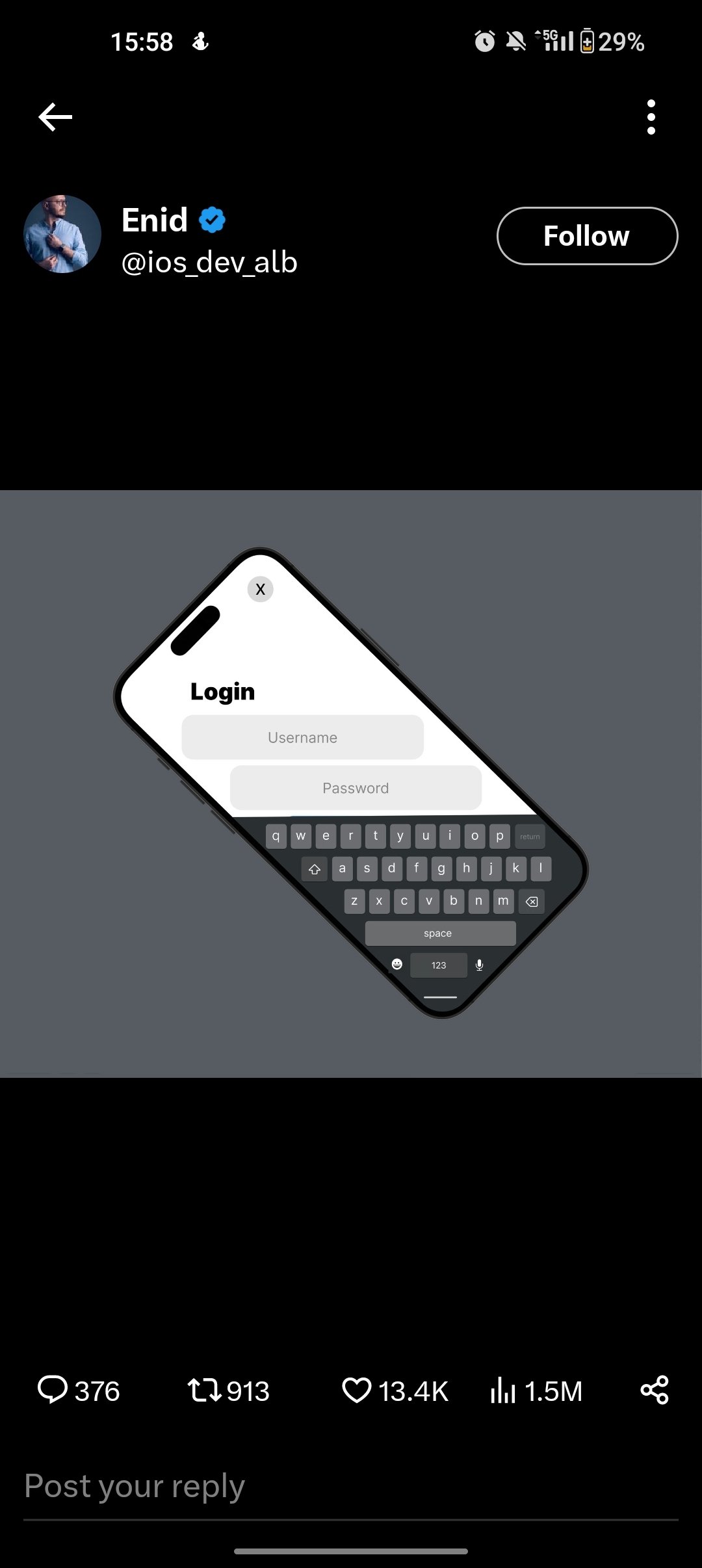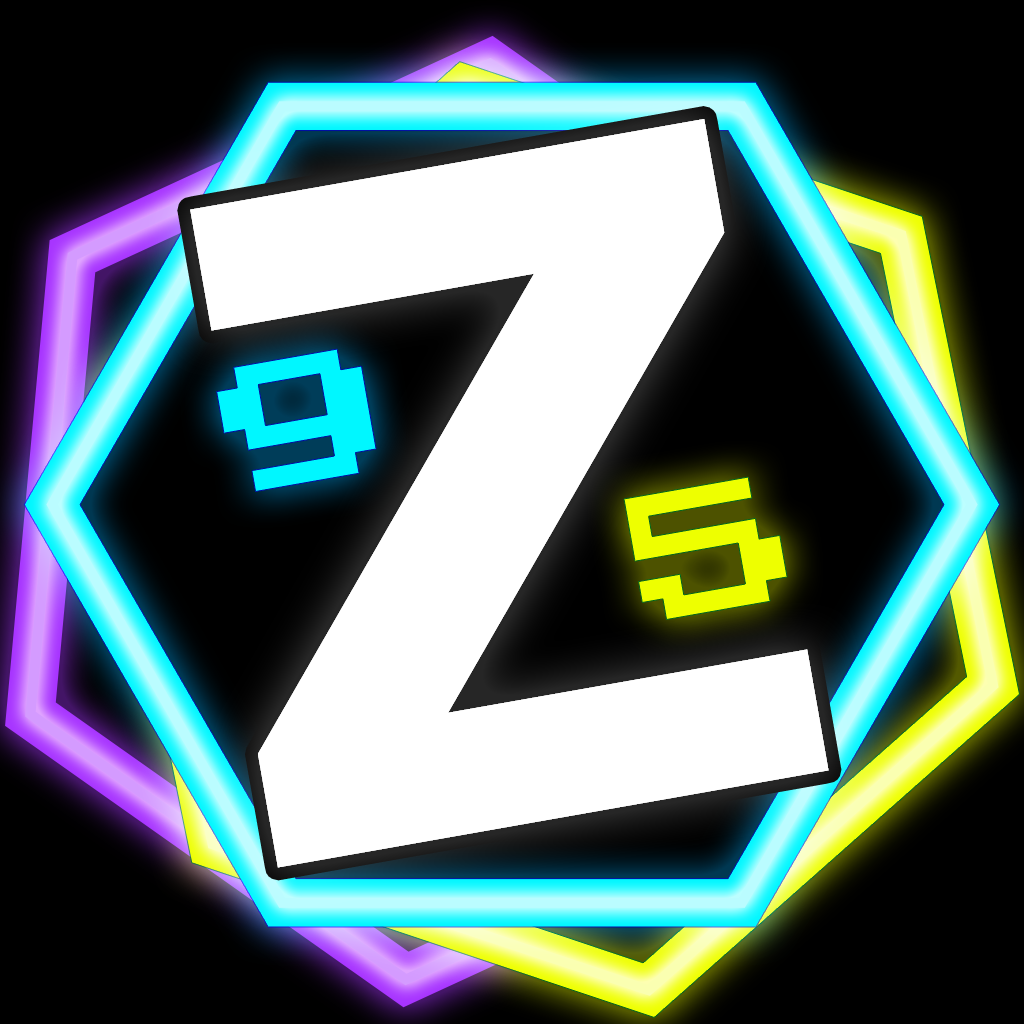Alt text:
Twitter post by Daniel Feldman (@d_feldman): Linux is the only major operating system to support diagonal mode (credit [Twitter] @xssfox). Image shows an untrawide monitor rotated about 45 degrees, with a horizontal IDE window taking up a bottom triangle. A web browser and settings menu above it are organized creating a window shape almost like a stepped pyramid.
Edit: alt text
Another funny concept

Hmm yes, web dev horrors beyond my comprehension!
That, right there, is a perfect example of why folks need to stop trying to shoehorn web apps everywhere they don’t belong. It’s a use-case for a proper native mobile app if ever there was one.
even if it’s just mobile
you already have to handle landscape/portrait mode
now imagine having to handle angled
That’s why you should’ve just handled arbitrary rotations instead of inventing a finite predefined set of orientation “modes” in the first place.
Things get a lot easier in the long run if you aggressively look for commonalities and genericize the code that handles them instead of writing bunches of one-off special cases.
And this is why my webapp only renders properly on circular displays.
Peak evil - well done. How much is the extra fee to wrap a letterbox around the circle on a conventional aspect ratio?
There’s good money in this idea!
true
however
everything would be fluid in the layout and you would need to set what should go on top of what. And having this feature doesn’t seem worth the hassle of making if work, or even using it.
Imagine trying to type in a ‘fluid’ keyboard
TBH tho, seems like a cool gimmick for some apps.
That’s called over-engineering for use cases that don’t and won’t exist. Please lecture us some more though.
Yeah, but I don’t want to have an app on my phone for a store I go to once. I don’t give a fuck if the page is ugly.
That just means it shouldn’t be a native app or a web app, but instead should be a plain ol’ webpage that doesn’t try to do app-y things in the first place. The notion that web pages have any legitimate reason to know your viewport size (let alone anything at all about the screen hardware itself) is like one of those “statements dreamed up by the utterly deranged” memes, except not satirical.
Seriously: literally the entire defining principle of HTML (well, aside from the concept of “hyperlinks”) is that the client has the freedom to decide how the page should be rendered, but misguided – or megalomaniacal –
graphic designerswebmastersfront-end web “devs” have been trying to break it ever since.Lol - in your other comment you suggested that web devs key off of screen rotation to resize the page, but now you’re saying the client shouldn’t know anything about the viewport at all? Which is it? And why would the rotation angle be useful if I don’t know the aspect ratio of the screen? Or are we now assuming that widescreen will be a thing forever? I thought your ingenius idea was to be able to handle any use case.
Lol - in your other comment you suggested that web devs key off of screen rotation to resize the page, but now you’re saying the client shouldn’t know anything about the viewport at all? Which is it?
Legitimate apps key off screen rotation do fancy stuff. Web pages let the browser render them and don’t try to do fancy stuff. It’s not that fucking hard.
Why does this low key feel like something I would actually want to use
Linux is the only major operating system
to support diagonal modeI’d just like to interject for a moment. What you’re refering to as Linux, is in fact, GNU/Linux, or as I’ve recently taken to calling it, GNU plus Linux. Linux is not an operating system unto itself, but rather another free component of a fully functioning GNU system made useful by the GNU corelibs, shell utilities and vital system components comprising a full OS as defined by POSIX.
Many computer users run a modified version of the GNU system every day, without realizing it. Through a peculiar turn of events, the version of GNU which is widely used today is often called Linux, and many of its users are not aware that it is basically the GNU system, developed by the GNU Project.
There really is a Linux, and these people are using it, but it is just a part of the system they use. Linux is the kernel: the program in the system that allocates the machine’s resources to the other programs that you run. The kernel is an essential part of an operating system, but useless by itself; it can only function in the context of a complete operating system. Linux is normally used in combination with the GNU operating system: the whole system is basically GNU with Linux added, or GNU/Linux. All the so-called Linux distributions are really distributions of GNU/Linux!
No, Richard, it’s ‘Linux’, not ‘GNU/Linux’. The most important contributions that the FSF made to Linux were the creation of the GPL and the GCC compiler. Those are fine and inspired products. GCC is a monumental achievement and has earned you, RMS, and the Free Software Foundation countless kudos and much appreciation.
Following are some reasons for you to mull over, including some already answered in your FAQ.
One guy, Linus Torvalds, used GCC to make his operating system (yes, Linux is an OS – more on this later). He named it ‘Linux’ with a little help from his friends. Why doesn’t he call it GNU/Linux? Because he wrote it, with more help from his friends, not you. You named your stuff, I named my stuff – including the software I wrote using GCC – and Linus named his stuff. The proper name is Linux because Linus Torvalds says so. Linus has spoken. Accept his authority. To do otherwise is to become a nag. You don’t want to be known as a nag, do you?
(An operating system) != (a distribution). Linux is an operating system. By my definition, an operating system is that software which provides and limits access to hardware resources on a computer. That definition applies whereever you see Linux in use. However, Linux is usually distributed with a collection of utilities and applications to make it easily configurable as a desktop system, a server, a development box, or a graphics workstation, or whatever the user needs. In such a configuration, we have a Linux (based) distribution. Therein lies your strongest argument for the unwieldy title ‘GNU/Linux’ (when said bundled software is largely from the FSF). Go bug the distribution makers on that one. Take your beef to Red Hat, Mandrake, and Slackware. At least there you have an argument. Linux alone is an operating system that can be used in various applications without any GNU software whatsoever. Embedded applications come to mind as an obvious example.
Next, even if we limit the GNU/Linux title to the GNU-based Linux distributions, we run into another obvious problem. XFree86 may well be more important to a particular Linux installation than the sum of all the GNU contributions. More properly, shouldn’t the distribution be called XFree86/Linux? Or, at a minimum, XFree86/GNU/Linux? Of course, it would be rather arbitrary to draw the line there when many other fine contributions go unlisted. Yes, I know you’ve heard this one before. Get used to it. You’ll keep hearing it until you can cleanly counter it.
You seem to like the lines-of-code metric. There are many lines of GNU code in a typical Linux distribution. You seem to suggest that (more LOC) == (more important). However, I submit to you that raw LOC numbers do not directly correlate with importance. I would suggest that clock cycles spent on code is a better metric. For example, if my system spends 90% of its time executing XFree86 code, XFree86 is probably the single most important collection of code on my system. Even if I loaded ten times as many lines of useless bloatware on my system and I never excuted that bloatware, it certainly isn’t more important code than XFree86. Obviously, this metric isn’t perfect either, but LOC really, really sucks. Please refrain from using it ever again in supporting any argument.
Last, I’d like to point out that we Linux and GNU users shouldn’t be fighting among ourselves over naming other people’s software. But what the heck, I’m in a bad mood now. I think I’m feeling sufficiently obnoxious to make the point that GCC is so very famous and, yes, so very useful only because Linux was developed. In a show of proper respect and gratitude, shouldn’t you and everyone refer to GCC as ‘the Linux compiler’? Or at least, ‘Linux GCC’? Seriously, where would your masterpiece be without Linux? Languishing with the HURD?
If there is a moral buried in this rant, maybe it is this:
Be grateful for your abilities and your incredible success and your considerable fame. Continue to use that success and fame for good, not evil. Also, be especially grateful for Linux’ huge contribution to that success. You, RMS, the Free Software Foundation, and GNU software have reached their current high profiles largely on the back of Linux. You have changed the world. Now, go forth and don’t be a nag.Thanks for listening.
The proper name is Linux because Linus Torvalds says so. Linus has spoken. Accept his authority.
This ain’t a bdsm club, so this is a bad argument.
Don’t feed the trolls.
I’m pretty sure everyone here understands both sides of the argument, but just don’t concider it important enough to change their vocabulary.
Was only treating you to delicious copypasta!

Embrace the power of the pyramid.
They put touchscreens on doorstops now? /s
Java truly runs on everything.
BRB, sticking microcontrollers to the back of my monitors so I can use their accelerometers to report the orientations in real time…
I would love it so much if xrandr was able to keep up with that and didn’t blink for 3 seconds every time you changed orientation
Maybe a custom Wayland compositor could keep up
This is why people can’t take desktop linux seriously.
Not on wayland, right? Time to pester wayland devs to add this important missing features!
Probably would fall into scope of a compositer in Wayland, rather than the protocol. I suspect it originated with old CRT displays. Sometimes they can appear scan diagonally.
Even without that usecase, I think it’s great to have around in order to support novel displays and display-like devices.
How can you do fractional rotation? Does it only work with x11 or is it also supported in wayland?
Rotating the display by a custom angle is possible through xrandr on X.org.
There’s no Wayland protocol for custom angle rotation, and I don’t expect anyone to create a protocol extension without a use-case.
My wild guess: Theoretically it should be possible for a compositor to support similar custom rotation, as applications simply draw to their surface (window), without knowing how and where it is displayed on the viewport (display).
But it might require quite a bit of work, depending on the project, so I don’t expect to ever see custom rotation on anything besides smaller/niche compositors.
[1] https://unix.stackexchange.com/questions/552138/rotate-a-display-by-custom-angle#552140
There’s no Wayland protocol for custom angle rotation, and I don’t expect anyone to create a protocol extension without a use-case.
Puh-lease. It’s Wayland; the devs fully and honestly expect every app developer (eg.: calc, Libreoffice, notepad.exe) to implement custom angle rotation on their own.
I won’t try implement something like this even my boss forces me.
No one does this kind of stuff because someone asked them to do it. This is the kind of useless, insane stuff you do for the lulz, or because someone dared you.
Why would you want this?
to display Java class names on a single line
What if your monitor has a bullet hole you want to avoid looking at?
Why does your monitor have a bullet hole?
Why do you ask so many questions? ಠ_ಠ










